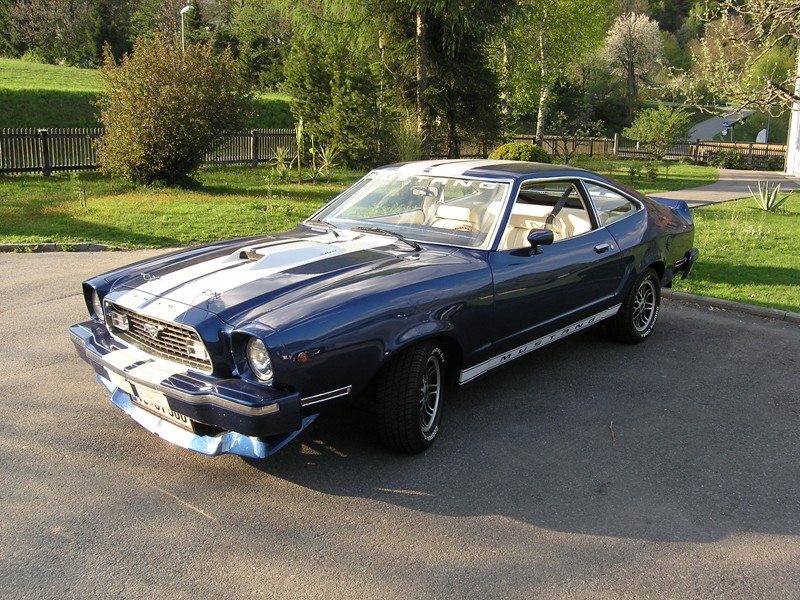High-performance Mustangs of the 1960s and early ’70s
Posted by Dale Edward Johnson on May 3rd 2023
The legendary Ford Mustang started out as a pretty tame pony, but quickly moved to the front of the horsepower race in the late 1960s and early 1970s.
When introduced in April 1964, the Mustang was essentially a fancy body for the plain and economical Ford Falcon. The Mustang borrowed heavily from the Falcon – which helped to keep costs down – including Falcon bucket seats and gauge cluster. Even the Mustang’s base engine, a 170 cubic inch 6-cylinder, was borrowed from the Falcon.

Early buyers of the Mustang were attracted by the looks and versatility.
The styling was dramatic, with a long hood and short trunk lid. Standard equipment included carpeting, bucket seats, a floor shifter and full wheel covers – which were extra-cost options on other North American cars. Available only as a coupe or convertible (a fastback was added for 1965) the Mustang had a starting price of $2,368 – just $252 more than a basic Falcon.
Never before had buyers been offered such a long list of options, allowing them to tailor their car to their own preferences. For some people, the Mustang was simply a better-looking Falcon, but still an economy car. Others buyers could turn their Mustang into a mini-Thunderbird luxury car by piling on such options as a vinyl roof, air conditioning and stereo tape player – for less than the price of a T-Bird. And other buyers quickly saw the performance potential of this sporty-looking, light-weight car.
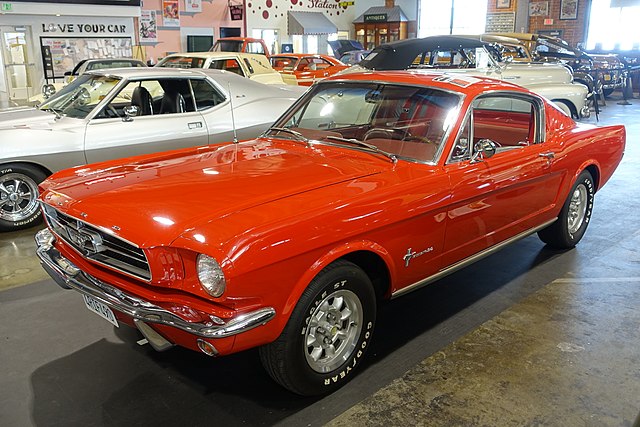
With this very wide appeal, and no competitors, the Mustang shattered sales records. Initial projections of sales of 100,000 in the first year were way off the mark: it took only four months to sell the first 100,000 Mustangs. On its first birthday a total of 418,000 Mustangs had been sold. In its first extended year (April 1964-September 1965) 680,000 Mustangs were sold.
When the Mustang first appeared in showrooms, as well as the standard 170-cid 6 producing 101 hp, there were two optional V-8s: a 260 and a 289. A few months later, the two smallest engines were dropped. A bigger 200 cid 6 was made standard, and the standard V-8 was a 289, good for 200 hp. Optional engines were 289s with either 225 hp or 271 hp.
The full performance potential of the Mustang became apparent when racer Carroll Shelby modified a few Mustangs by adding several performance goodies to create the Shelby American GT-350 and later the GT-500. The 289 V-8 was enhanced to turn out 306 hp. Heavy duty springs and shocks were added, there were disc brakes up front, the suspension was improved, a fiberglass hood with a scoop was added, along with extra instrumentation, a bigger radiator and an aluminum oil pan.
These modified Mustangs saw lots of success on race tracks. Buyers who couldn’t get an actual Shelby Mustang could get a basic Mustang and then modify it, by adding on various high-performance parts.
There were only very minor changes for 1966. Twelve-month sales of the 1966 models actually exceeded the same 12-month period for the 1965 models.
But the pony car game changed dramatically for the 1967 model year, when the Mustang faced competition from the new Chevrolet Camaro and Pontiac Firebird. As well, Mercury offered a luxury version of the Mustang, called the Cougar. Plymouth had the Barracuda (which was introduced a few days before the Mustang). While total pony car sales increased in 1967, Mustang now had to share the pie. The pony car wars were in full swing in the late 1960s and American Motors joined the race for the 1968 model year with the new Javelin.
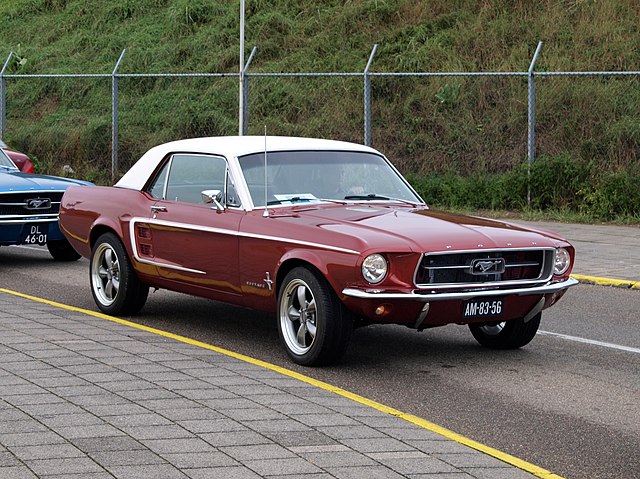
The all-new Mustang for 1967 was longer, lower and wider – mainly to accommodate a new engine, a 390 cid V-8 from the Thunderbird that turned out 320 hp. This was the largest engine in the pony car segment. More options – now more than 100 – were offered for luxury and performance touches. Although Mustang production dropped to 472,121 units – mainly due to increased competition – the Mustang was the dominant pony car, capturing 42.5 per cent of sales in the segment.
The following year, Mustang offered even bigger engines, including a 427 cid with 380 hp and mid-year a 428 cid Cobra Jet V-8 producing 335 hp came out.
The Mustang was restyled for 1969, and was again longer, lower and wider. Performance became even more important for 1969, with three new hot Mustangs. There was the Mach I, with engines choices of 250 hp and 290 hp versions of the 351 cid V-8; a 390 cid V-8 producing 320 hp; and the the Cobra Jet 428 producing 335 hp. Also new was the Boss 429 cid with 375 hp. Introduced midway through the 1969 model year was the Boss 302, which was designed to take on the Chevrolet Camaro Z/28, both in showroom, and on the Trans Am racing circuit.
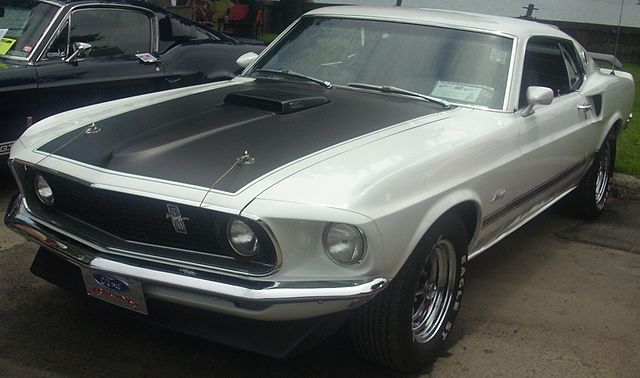
There were minor styling changes for 1970, and nine engines available, from a 200 cid 6 to a 429 Boss V8 producing 375 hp. Mustang sales were 2.1 per cent of the total new car market, well down from the 7.1 per cent share in 1966.
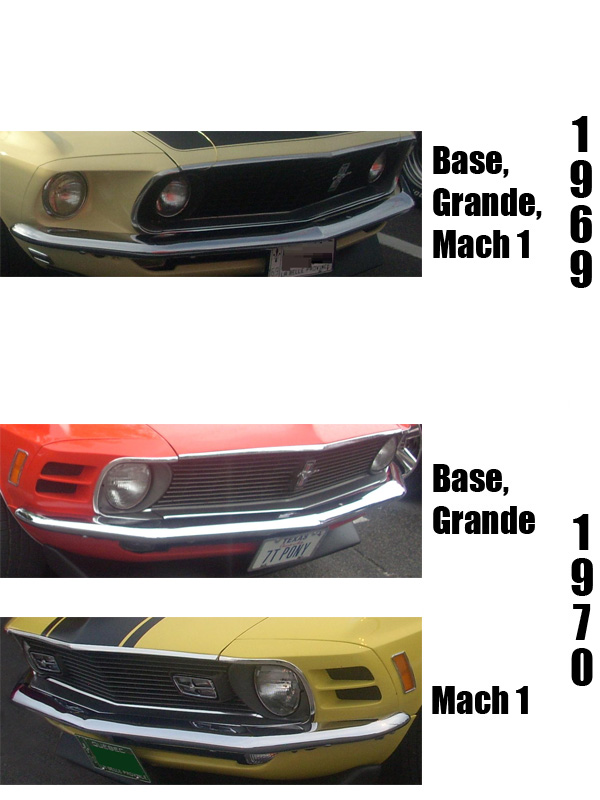
The Mustang continued to grow for 1971, and was longer, wider, heavier and lower. The Boss 302 and Boss 429 were dropped, although a Boss 351 was added. Engine choices included a Cobra Jet 429 with 370 hp and a Super Corba Jet 429 with 375 hp.
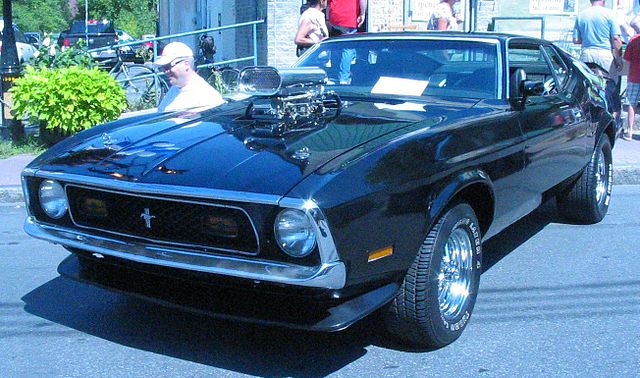
That would mark the high point for high-horsepower Mustangs. Society was changing and people were moving to smaller, less expensive cars. Mustang responded, and for 1972 and 1973 the biggest engine available was the 351 cid V-8.
For the 1974 model year, the Mustang II was introduced, based on the sub-compact Pinto. It was almost 19 inches shorter and nearly 500 pounds lighter than the 1973 Mustang. For the first time, the Mustang was not offered with a V-8 – only 4- or 6-cylinder engines. But that would soon change, and V-8s would later return to the Mustang lineup.
